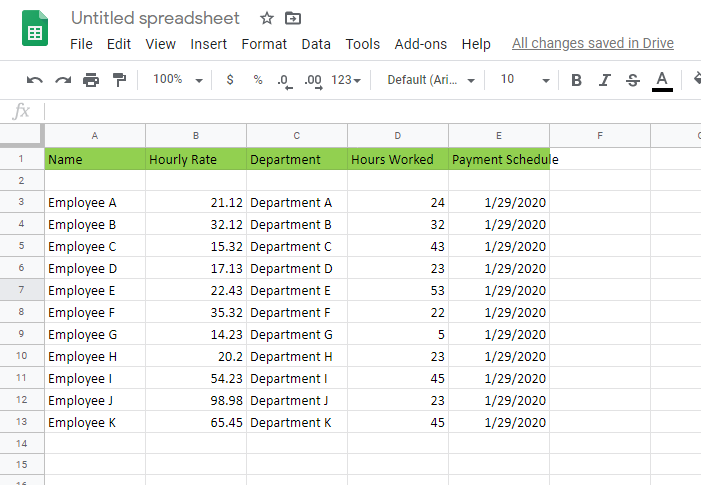
Didn’t get?įor example, the search_key 3 (row # 3) is not present in H2:H10. Lookup Rule: If the search_key is not found in the search_range, the item used in the Lookup will be the value that’s immediately smaller in the range provided. The search_key is the row numbers 2 to 10, the search_range is the helper_formula_1 result in H2:H10, and the result_range is B2:B10. Syntax: LOOKUP(search_key, search_range, result_range) To learn the above formula, first, refer to the Lookup syntax below that we have followed in the just above Lookup formula (as a side note, the Lookup function has two types of syntaxes).
Google doc merge cell commande how to#
It’s important to learn the above formula to understand how to Sumif in merged cells in Google Sheets. The Lookup will populate the following result in I2:I10. In cell I2, insert the below Lookup formula (let’s call it helper_formula_2). Now let’s go to the key step under “Helper Range 2” to perform the Sumif formula in merged cells in Google Sheets. All the other cells in the range B2:B10 are blanks. We can understand that B2 contains “APPLE”, B4 contains “POMEGRANATE”, and B8 contains “BANANA”. The formula would return the following result.

In cell H2, insert the below formula (let’s call it helper_formula_1) to return the row numbers of the cells that contain values in the range B2:B10. Here I’m using the possibly simplest one.įirst, I’ll use two helper column ranges that we can remove later on. Virtual ‘Range’Īctually, for this, we can use different variations of a formula. That means, as per our fruits’ data, fill B2:B3 with “APPLE”, B4:B7 with “POMEGRANATE”, and B8:B10 with “BANANA” (scroll up and see the very first screenshot). The role of the virtual range is to fill all the merged cells with values.

So to use Sumif in merged cells in Google Sheets, we should replace the ‘range’ with a virtual range. That means, in this particular case, Sheets records the value “UK” only in cell A1, not in the range A1:A10. That would be the case with other cells in this merged range. The formula would return the value “UK”.Ĭhange A1 with A2 in the formula and you can see that the formula now returns blank. When you merge a set of cells, for example, A1:A10, and type a value in this merged range, the value you entered will be recorded in cell A1, not in all the cells in the range A1:A10.įor example, select the range A1:A10 and click Format > Merge cells > Merge all.

See that example too.īut if you want to keep the merged cells and use the Sumif function, then you can find the correct formula below. If you unmerge the cells and make the data similar to a database table, the formula would correctly return 100. The Sumif formula in merged cells returns 10 instead of 100 (10+20+30+40) for the criterion “POMEGRANATE” (formula in cell F3 and criterion in cell E3). To make you understand the issue, let me use the below fruits’ data and a basic Sumif formula in cell F3. In a merged range, we may find it difficult or unable to use database functions and other functions like Sumif, Filter, Query, etc. The merging of cells may make a huge difference (negative impact) in our data manipulation.

When we merge cells in our spreadsheet, we must understand that it’s at the cost of losing the database ‘structure’ of our entered data. The option for the same you can find under the Format menu in Google Docs Sheets. Unlike database applications, we can merge cells in spreadsheets. Let’s learn more about this type of conditional sum below. We can use Sumif in merged cells in Google Sheets.


 0 kommentar(er)
0 kommentar(er)
